Sourav Pan
Transcript
Hey everyone! Today, we’re diving into the fascinating world of brown algae, also known as Phaeophyta.
These aren’t your typical pond scum; they’re mostly marine multicellular organisms that give coastal environments a unique character.
Let’s look at what these amazing organisms actually look like in their natural underwater habitat.
Here’s a closer look at brown algae growing on rocky surfaces, showing their distinctive brown coloration and complex structure.
Think of them as the forests of the sea, often found in cooler waters where they create underwater ecosystems.
These remarkable organisms prefer cooler marine waters and play crucial roles in ocean ecosystems worldwide.
Now that we understand what brown algae are, we’re ready to explore their unique features and importance in marine environments.
Brown algae get their distinctive color from a special pigment, but there’s much more to this coloration than meets the eye. Understanding why they’re brown reveals an amazing adaptation for underwater life.
The answer lies in a remarkable pigment called fucoxanthin. This golden-brown pigment is what gives brown algae their characteristic appearance, but it serves a much more important purpose than just coloration.
Now here’s something fascinating – brown algae still contain chlorophyll, the green pigment that all photosynthetic organisms use. The fucoxanthin doesn’t replace chlorophyll; instead, it masks the green color while working alongside it.
But why would brown algae evolve this brown pigment? The secret lies in how different pigments absorb light at various wavelengths. Let’s examine this light absorption graph to understand the advantage.
This graph shows that chlorophyll absorbs light most efficiently in the blue and red regions. However, as we go deeper underwater, red light gets filtered out first, leaving mainly blue and green light available.
Here’s where fucoxanthin becomes crucial. This brown pigment is excellent at capturing blue and green light that penetrates deeper into the water, then transferring that energy to chlorophyll for photosynthesis.
Think of fucoxanthin as a special filter or antenna system. Just like how sunglasses filter certain wavelengths of light, fucoxanthin filters and captures the specific wavelengths that are most abundant in deeper water environments.
This adaptation gives brown algae a significant competitive advantage. While other algae might struggle in deeper or murkier waters where red light is scarce, brown algae can thrive by efficiently using the available blue and green light.
Brown algae have very specific habitat preferences. They are predominantly marine organisms, which means they live exclusively in saltwater environments like oceans and seas.
Unlike freshwater algae, brown algae cannot survive in rivers or lakes. They need the salt content of ocean water to maintain their cellular functions and structural integrity.
You’ll find brown algae in abundance along coastlines around the world. They create underwater forests and meadows that are among the most productive ecosystems on Earth.
Brown algae show a strong preference for colder waters. They thrive in temperate and polar regions where water temperatures are lower, which is why you’ll see massive kelp forests along coasts like California, Chile, and Tasmania.
These brown algae serve as the foundation of marine ecosystems. They’re like underwater trees, creating complex three-dimensional habitats.
They provide both food and shelter for countless marine organisms. Fish hide among their fronds, sea urchins graze on them, marine mammals hunt in their shadows, and countless invertebrates make their homes on their surfaces.
Brown algae also show remarkable diversity in their specific habitat preferences. Some species prefer rocky shores with strong wave action, while others thrive in calmer, deeper waters.
From the intertidal zones where they’re exposed to air at low tide, to depths of over 200 meters in clear waters, brown algae have adapted to fill nearly every available marine niche along the world’s coastlines.
Two of the most well-known brown algae are kelp and sargassum. These remarkable organisms create some of the ocean’s most important ecosystems and play crucial roles in marine environments.
Kelp forms massive underwater forests that can stretch for miles along coastlines. These towering brown algae create three-dimensional habitats that support incredible biodiversity.
Now let’s look at sargassum, which creates a completely different type of habitat at the ocean’s surface.
Sargassum is unique among brown algae because it floats freely on the ocean’s surface, forming vast golden-brown mats that can be seen from space. These floating ecosystems support their own communities of marine life.
Both kelp and sargassum play vital roles in the ocean’s carbon cycle, helping to remove carbon dioxide from the atmosphere.
Through photosynthesis, both kelp and sargassum absorb carbon dioxide from seawater and the atmosphere. When they die and sink to the ocean floor, they can store carbon for long periods, making them important players in fighting climate change.
These brown algae ecosystems are essential for ocean health and global climate stability.
Here are the key takeaways about kelp and sargassum: Kelp creates underwater forests in cold waters, sargassum forms floating mats in warm waters, both provide crucial habitats for marine life, and both play important roles in carbon cycling and climate regulation.
Brown algae have some of the most fascinating and complex life cycles in the natural world. Unlike simple organisms that just grow and reproduce, brown algae use multiple strategies to ensure their survival.
What makes these life cycles complex is something called alternation of generations. This means brown algae alternate between two completely different forms during their lifetime.
The first form is called the sporophyte phase. This is the diploid phase, meaning it has two sets of chromosomes. This is usually the larger, more visible form that we typically see.
The second form is the gametophyte phase. This is the haploid phase with only one set of chromosomes. It’s often smaller and produces the reproductive cells called gametes.
Now let’s see how these phases connect in a continuous cycle. The sporophyte produces spores through meiosis, which develop into gametophytes.
The gametophytes then produce male and female gametes, which fuse together in fertilization to create a new sporophyte, completing the cycle.
Let’s look at a real example of this complex life cycle in brown algae. This diagram shows exactly how the alternation of generations works in nature.
This diagram shows the complete cycle. Notice how the brown algae alternates between the diploid sporophyte stage and the haploid gametophyte stage, with meiosis and fertilization connecting them.
But brown algae don’t just have one type of life cycle. Different species have evolved different variations. Let’s examine the four main types of life cycles found in algae.
Each diagram shows a different strategy. Some have dominant sporophyte phases, others have dominant gametophyte phases, and some are more balanced between the two.
Now, why is this complexity so important? Having multiple reproductive strategies gives brown algae incredible advantages for survival in changing ocean conditions.
First, they can reproduce sexually when conditions are good, creating genetic diversity that helps them adapt to new challenges.
Second, they can reproduce asexually when conditions are harsh, allowing rapid reproduction without needing to find a mate.
Finally, having two different life stages means they can occupy different ecological niches and take advantage of various environmental conditions throughout the year.
This complexity is like having multiple backup plans. If one strategy doesn’t work in current conditions, brown algae can switch to another approach, making them incredibly resilient and successful in ocean environments.
Brown algae have unique cell walls that are specially adapted for life in the ocean. These cell walls are quite different from those found in land plants and contain some remarkable substances.
The cell wall of brown algae has a unique two-layer structure. Let’s examine this structure in detail using a cross-section of a brown algae stipe.
The outer layer is slimy and contains two important substances: alginic acid and fucoidan. Alginic acid is the star component that gives brown algae their unique properties.
The inner layer is made of cellulose, similar to land plants. This provides structural support, while the outer alginic acid layer gives flexibility and protection from waves and salt water.
Alginic acid has many important uses in human industry. It’s harvested from brown algae and used in food products as a thickener, in pharmaceuticals, and in various industrial applications.
This unique cell wall structure is what makes brown algae so successful in harsh marine environments. The combination of flexible alginic acid and strong cellulose creates the perfect protection system for ocean life.
Brown algae have a unique body structure called a thallus. Unlike land plants, the thallus doesn’t have true roots, stems, or leaves, but it has specialized parts that perform similar functions.
The thallus is typically divided into three main parts: the holdfast at the bottom, the stipe in the middle, and the blade at the top. Let’s examine each part and understand how they work together.
The holdfast is the bottom part that anchors the algae to rocks or other surfaces. It’s like a root system, but it doesn’t absorb nutrients from the substrate. Instead, it simply provides a strong grip to prevent the algae from being swept away by currents.
The stipe is the stem-like structure that connects the holdfast to the blades. It provides support and flexibility, allowing the algae to bend with water currents without breaking. Some stipes can be quite long, especially in kelp species.
The blades are the leaf-like structures at the top where photosynthesis occurs. They have a large surface area to capture maximum sunlight and are often thin to allow efficient gas exchange. Some species also have gas bladders to help the blades float near the surface.
This three-part structure is incredibly efficient. The holdfast keeps the algae securely attached, the stipe provides flexible support, and the blades maximize light capture for photosynthesis. This design allows brown algae to thrive in challenging marine environments where they must withstand strong currents while still accessing sunlight and nutrients from the water.
Brown algae display an incredible range of sizes, from microscopic forms barely visible to the naked eye, all the way up to massive giant kelp that can tower 70 meters tall. This amazing diversity shows just how adaptable these organisms are.
At the smallest end of the spectrum, we have microscopic brown algae. These tiny organisms consist of delicate filaments made up of individual cells arranged in chains. Though small, they play important roles in marine ecosystems.
Moving up in size, we find medium-sized brown algae that can be several centimeters to a few meters long. These forms begin to show more complex structures and are commonly found in tide pools and shallow coastal waters.
But the real giants of the brown algae world are the kelp forests. These underwater cathedrals can reach incredible heights, with giant kelp growing up to 70 meters tall – that’s taller than a 20-story building!
How do kelp grow so incredibly tall? They have specialized structures that help them reach toward sunlight. The holdfast anchors them to rocks, the stipe acts like a flexible trunk, and the blades capture sunlight for photosynthesis.
To put this size range in perspective, imagine standing in front of an aquarium. The difference between the smallest brown algae and giant kelp is like comparing a grain of sand to a skyscraper. This incredible adaptability allows brown algae to thrive in many different marine environments.
Brown algae have an incredible evolutionary history spanning hundreds of millions of years. These remarkable organisms have survived through dramatic changes in Earth’s climate and continue to adapt today.
Brown algae first evolved approximately 150 to 200 million years ago, during the Mesozoic Era. This was a time when dinosaurs roamed the Earth and the climate was very different from today.
This graph shows 65 million years of climate change that brown algae have witnessed. They survived through warming periods, ice ages, and dramatic temperature fluctuations that would challenge any organism.
Throughout their evolutionary history, brown algae developed key adaptations that helped them survive. They evolved the fucoxanthin pigment for better light capture, developed complex multicellular structures, and became perfectly adapted to marine environments.
Today, brown algae face new challenges from climate change, including ocean warming, acidification, and changing currents. However, their long evolutionary history shows they are remarkably adaptable organisms.
The evolutionary history of brown algae teaches us about resilience and adaptation. These organisms have survived for hundreds of millions of years, adapting to countless environmental changes, and they continue to evolve today.
Brown algae represent an incredibly diverse group of marine organisms. Scientists have identified between 1,500 and 2,110 different species of brown algae worldwide.
This remarkable diversity is organized into 19 distinct orders. Each order represents a major group of brown algae with similar characteristics and evolutionary relationships.
This diversity reflects their remarkable ability to thrive in various marine environments around the world. From cold polar waters to temperate coastal zones, brown algae have adapted to many different ocean conditions.
To understand this diversity, we need to look back in time. The evolutionary history of brown algae spans hundreds of millions of years, beginning during the Mesozoic Era.
The older orders of brown algae started diverging during the Mesozoic Era, approximately 250 million years ago. This was the age of dinosaurs, a time of dramatic environmental changes.
However, most brown algae orders actually diverged much later, during the Cretaceous period, between 145 and 66 million years ago. This was near the end of the dinosaur era.
This timing is significant because the Cretaceous period ended with a major extinction event that wiped out the dinosaurs. Brown algae not only survived this catastrophe but diversified extensively.
Today, this ancient lineage continues to thrive. The classification of brown algae into these 19 orders helps scientists understand their relationships and study their remarkable adaptations to marine life.
Brown algae have become incredibly important in modern aquaculture and industry. These marine organisms are now cultivated on a massive scale for numerous economic applications.
Remarkably, about forty percent of all cultivated algae worldwide are brown algae species. This shows just how valuable and important these organisms have become for human use.
Here we can see brown algae in their natural form – the dark, ribbon-like seaweed that washes up on beaches. This is the raw material that gets transformed into countless useful products.
Brown algae are harvested and processed for five major economic sectors. Each sector takes advantage of different properties of these remarkable organisms.
First, brown algae are processed into fertilizers. The alginic acid and other compounds make excellent soil enhancers that help plants grow better and stronger.
Second, they serve as nutritious animal feed for livestock and farmed fish. Brown algae provide essential nutrients and minerals that improve animal health.
Third, brown algae are used in food products for human consumption. They can be eaten directly or processed into food additives and thickening agents.
Fourth, the pharmaceutical industry uses brown algae to create medicines and health supplements. Many bioactive compounds in brown algae have therapeutic properties.
Finally, brown algae show great promise for sustainable biofuel production. They can be converted into clean-burning fuels that help reduce our dependence on fossil fuels.
The scale of brown algae cultivation is truly impressive. Let’s look at the global production numbers that show just how big this industry has become.
In twenty twenty, coastal and marine aquaculture produced over thirty-five million tons of algae globally. This represents a massive industry that continues to grow each year.
Since brown algae make up about forty percent of all cultivated algae, this means approximately fourteen million tons of brown algae were produced in twenty twenty alone.
Brown algae aquaculture represents a rapidly growing, multi-billion dollar industry. From fertilizers to pharmaceuticals, from food to fuel, these remarkable organisms are becoming essential to our modern economy and sustainable future.
Climate change is creating serious challenges for brown algae around the world. Rising ocean temperatures and changing water chemistry are disrupting these important marine ecosystems.
Ocean warming is one of the most significant impacts. Sea surface temperatures have been rising at more than zero point one degrees Celsius per decade since the mid-twentieth century.
This graph shows global temperature trends from nineteen fifty to the present, clearly demonstrating the upward trend in both adjusted and unadjusted temperature data.
Ocean acidification occurs when carbon dioxide from human activities dissolves into seawater, forming carbonic acid and lowering the ocean’s pH. This process directly affects brown algae and their marine ecosystems.
Kelp forests worldwide are experiencing significant decline. These underwater forests face multiple stressors including marine heatwaves, storm damage, herbivore outbreaks, and general temperature stress.
Ocean temperature varies significantly with depth, as shown in this graph. Brown algae living at different depths experience varying degrees of temperature stress as warming affects different ocean layers.
The key impacts of climate change on brown algae include altered species distribution due to temperature changes, reduced biodiversity in affected areas, and overall ecosystem disruption. These changes threaten the important ecological and economic roles that brown algae play in marine environments.
Brown algae have developed a remarkable chemical defense system called halogenated metabolism. This unique ability helps them survive in challenging marine environments.
Inside brown algae cells, special enzymes can attach halogen atoms like chlorine, bromine, and iodine to organic molecules through oxidative reactions.
The three main halogens used are chlorine, bromine, and iodine. These atoms are incorporated into organic compounds through specialized enzymatic processes.
This process couples oxidation reactions with halogenation, creating halogenated organic compounds that serve as chemical defenses.
This halogenated metabolism acts like a chemical shield. When brown algae face biotic stresses like bacteria and pathogens, or abiotic stresses like temperature changes, the halogenated compounds provide protection.
The halogenated compounds can disrupt harmful microorganisms, neutralize toxic substances, and help maintain cellular stability under stress conditions.
In summary, halogenated metabolism is like giving brown algae their own chemical laboratory, allowing them to create protective compounds that help them thrive in challenging ocean conditions.
Scientists around the world are conducting cutting-edge research on brown algae, trying to unlock the secrets of these remarkable marine organisms.
Current research focuses on three main areas: understanding molecular development, studying complex life cycle processes, and investigating how brown algae adapt to environmental challenges.
Scientists are studying the molecular processes that control how brown algae grow and develop. This includes examining DNA, proteins, and cellular mechanisms that guide their complex multicellular structure.
Researchers are also investigating the complex life cycles of brown algae, which involve both sexual and asexual reproduction stages. Understanding these cycles helps scientists learn how these organisms reproduce and spread.
Perhaps most importantly, scientists are studying how brown algae survive and adapt to environmental stresses like temperature changes, pollution, and ocean acidification. This research helps us understand their remarkable resilience.
This research is crucial for understanding how brown algae might respond to future environmental changes and how we can better utilize these organisms for sustainable applications like biofuels and carbon sequestration.
By studying brown algae at the molecular level, scientists are building the foundation for future innovations in biotechnology, environmental conservation, and sustainable resource management.
Seaweed farming is experiencing unprecedented expansion worldwide, transforming from traditional coastal practices into a major global industry.
The growth is particularly concentrated in East and Southeast Asia, where countries like China, Indonesia, Japan, and South Korea dominate global production.
This expansion is driven by increasing demand across multiple industries. Seaweed is used for human food, animal feed, pharmaceuticals, cosmetics, and biofuels.
The numbers tell an impressive story. Seaweed aquaculture has tripled in the last twenty years, with production dominated by Asian countries.
Looking ahead, experts predict that increasing seaweed cultivation could contribute to a ten percent increase in the global food supply by twenty fifty.
However, data quality varies across regions. While countries like South Korea and Japan provide reliable production statistics, other major producers show inconsistent reporting.
This rapid expansion represents a fundamental shift in how we think about marine agriculture and sustainable food production for our growing global population.
The global algae products market has reached significant economic importance. In 2024, this market was valued at 41.88 billion US dollars, representing a substantial industry built around these remarkable marine organisms.
This market is projected to experience remarkable growth. By 2032, experts predict the global algae products market will reach 70.28 billion dollars, representing a significant expansion over the eight-year period.
This growth represents a compound annual growth rate of 6.78 percent. This means the market is expected to grow by nearly 7 percent each year, demonstrating strong and consistent expansion in the algae industry.
To understand this growth better, let’s examine how the algae market is structured and what drives this expansion.
The market is segmented by both product type and application. Macro algae, which includes brown algae like kelp, represents the largest portion of the market by product type. The diverse applications span food and beverages, pharmaceuticals, animal feed, and many other industries.
The commercial applications of algae are remarkably diverse, which explains the strong market growth.
Algae products serve numerous commercial applications including biofuels, cosmetics, food products, pharmaceuticals, and fertilizers. This diversity creates multiple revenue streams and reduces market risk, contributing to the steady growth rate we’re seeing.
This market growth reflects the growing recognition of algae’s value as a sustainable, versatile resource. As industries seek environmentally friendly alternatives and new applications continue to emerge, the algae market is positioned for continued expansion.
Brown algae represent one of nature’s most promising solutions for sustainable biomass production. Unlike traditional crops, these marine organisms offer unique advantages in our fight against climate change.
Microalgae cultivation stands out because of their incredibly rapid growth rates. These tiny organisms can double their biomass in just hours or days, far outpacing traditional crops like corn or soybeans.
During photosynthesis, brown algae absorb carbon dioxide from the atmosphere and convert it into biomass while releasing oxygen. This process directly removes greenhouse gases from our environment.
When compared to traditional crops, algae offer remarkable advantages. They grow ten to fifty times faster, require no soil, use less water, and can be produced year-round in controlled environments.
This makes algae cultivation a powerful tool in fighting climate change. By rapidly converting atmospheric carbon dioxide into useful biomass, brown algae help reduce greenhouse gas concentrations while producing valuable materials for various industries.
Brown algae aren’t just food sources – they’re becoming increasingly important as nutraceuticals, combining nutrition with pharmaceutical benefits for human health.
Nutraceuticals are products that combine nutritional value with pharmaceutical benefits. They’re derived from food sources but provide specific health advantages beyond basic nutrition.
Under the microscope, brown algae reveal complex cellular structures containing numerous bioactive compounds. These microscopic components hold the key to their health benefits.
Brown algae contain several important bioactive compounds. Fucoxanthin provides antioxidant properties, alginic acid supports digestive health, fucoidan has anti-inflammatory effects, and phenolic compounds offer cancer-fighting potential.
These compounds translate into real health benefits that are driving market interest and research investment worldwide.
The health benefits are impressive and varied. Brown algae provide antioxidant protection against cellular damage, reduce inflammation throughout the body, support digestive health, and show promising cancer prevention properties.
This growing understanding of health benefits is significantly impacting the global algae products market.
The global algae products market was valued at 41.88 billion dollars in 2024 and is projected to reach 70.28 billion dollars by 2032, showing a robust annual growth rate of 6.78 percent.
The future of brown algae extends far beyond traditional food applications into the realm of personalized medicine and targeted health solutions.
Brown algae represent a perfect example of how traditional food sources can evolve into sophisticated health solutions, combining ancient wisdom with modern scientific understanding to create products that nourish and heal.
Brown algae, particularly kelp forests, are among nature’s most powerful carbon capture systems. These underwater giants play a crucial role in removing carbon dioxide from our atmosphere and storing it safely away.
Carbon sequestration is the process of capturing and storing atmospheric carbon dioxide. Kelp and other brown algae accomplish this through photosynthesis, converting CO2 into organic compounds that can be stored for long periods.
The process begins when kelp absorbs carbon dioxide dissolved in seawater. Through photosynthesis, they convert this CO2 into sugars and other organic compounds, effectively removing carbon from the water and atmosphere.
The Calvin cycle is the biochemical pathway that converts carbon dioxide into organic sugars. This process requires energy from sunlight and produces glucose and other carbon-rich compounds that become part of the kelp’s structure.
Once carbon is fixed into kelp biomass, it can be stored in several ways. Some carbon remains in the living kelp tissue, while other carbon-rich materials sink to the ocean floor or are transported to deep waters where they can be sequestered for decades or centuries.
Kelp forests are incredibly efficient carbon sinks. A single large kelp forest can sequester thousands of tons of carbon dioxide annually. This makes them valuable allies in fighting climate change and regulating our planet’s carbon cycle.
Understanding carbon sequestration by brown algae helps us appreciate their vital role in maintaining Earth’s climate balance. These underwater forests are not just beautiful ecosystems, but essential carbon capture facilities that help protect our planet’s future.
Brown algae represent one of the most promising renewable energy sources for our future. Their remarkable growth rates and unique properties make them ideal candidates for sustainable biofuel production.
Biofuels are renewable energy sources derived from living organisms, unlike fossil fuels which take millions of years to form. This makes them a sustainable alternative for our energy needs.
Brown algae have a significant advantage: their incredibly rapid growth rates. While trees take decades to mature, brown algae can double their biomass in just days or weeks.
The biofuel production cycle is sustainable and carbon-neutral. Brown algae absorb carbon dioxide as they grow, which is then released when the biofuel is burned, creating a closed loop system.
Brown algae offer several key advantages for biofuel production. They don’t compete with food crops for land, they can grow in seawater, and they produce high yields of biomass per unit area.
The potential impact is enormous. Brown algae biofuels could significantly reduce our dependence on fossil fuels, decrease greenhouse gas emissions, and create a truly sustainable energy future for generations to come.
Three brown algae species stand out as the giants of global seaweed production. These remarkable organisms dominate the commercial algae market and feed millions of people worldwide.
First, we have Saccharina japonica, commonly known as Japanese kelp. This incredible species represents thirty-five point five percent of the world’s entire algal production as of twenty twenty.
Japanese kelp is extensively cultivated in East Asia, particularly in China, Japan, and Korea. Its massive production scale makes it the backbone of the global seaweed industry.
Second is Undaria pinnatifida, better known as wakame. This popular seaweed represents eight percent of global algal production and is a staple in Japanese cuisine.
Wakame is prized for its nutritional value and distinctive flavor. It’s commonly used in miso soup, salads, and various Asian dishes, making it one of the most recognizable seaweeds worldwide.
Third is Sargassum fusiforme, representing zero point eight percent of global production. While smaller in volume, this species is highly valued for its unique properties and traditional uses.
Sargassum fusiforme is traditionally harvested and valued for its medicinal properties and distinctive taste. Though it represents a smaller market share, it commands premium prices due to its specialized uses.
Together, these three species represent nearly half of all global algae production. Their combined market dominance demonstrates the concentrated nature of the seaweed industry.
These species are vital to the global algae market, providing food security, economic opportunities, and sustainable biomass for millions of people worldwide. Their cultivation represents a perfect example of sustainable aquaculture.
Two remarkable examples perfectly demonstrate the incredible diversity of brown algae: the tiny Ectocarpus used in research laboratories, and the massive Macrocystis that creates underwater forests.
Ectocarpus is a small, simple brown algae that has become the go-to model organism for scientists studying brown algae biology and genetics.
Scientists choose Ectocarpus because it’s easy to grow in laboratory conditions, has a relatively simple structure, and represents the key characteristics of all brown algae.
Now let’s explore the complete opposite end of the brown algae spectrum – the magnificent giant kelp, Macrocystis.
Macrocystis, commonly known as giant kelp, is one of the most impressive organisms on Earth. It can grow up to 60 meters or 200 feet in length – that’s taller than a 15-story building!
These giant kelp don’t grow alone. They form vast underwater forests that create entire ecosystems, providing homes for countless marine species.
To truly appreciate the scale of these kelp forests, imagine swimming through them like this diver, surrounded by towering kelp fronds reaching toward the surface.
From the microscopic Ectocarpus helping scientists unlock the secrets of brown algae, to the towering Macrocystis creating underwater cathedrals, these examples showcase the remarkable diversity and ecological importance of brown algae in our oceans.
Experts around the world are in agreement: brown algae will play an increasingly vital role in our future. From sustainable food production to climate solutions, these remarkable organisms are positioned to transform multiple industries.
Leading researchers emphasize brown algae’s growing importance across multiple industries. They highlight the critical role these organisms play in ecosystem sustainability and note how advancing research and farming techniques are unlocking new possibilities.
Modern aquaculture operations are already demonstrating this potential. Advanced farming systems now cultivate multiple species together, creating efficient underwater ecosystems that maximize both productivity and environmental benefits.
The economic potential is staggering. Market analysts project that emergent seaweed markets could reach eleven point eight billion dollars by twenty thirty, representing unprecedented growth in this sector.
Looking ahead, experts identify several key areas where brown algae will make significant contributions. These include sustainable food production, carbon capture technologies, renewable energy sources, and pharmaceutical applications.
As we look to the future, brown algae represent a convergence of environmental sustainability and economic opportunity. Continued research and improved farming practices will unlock even greater potential from these amazing organisms, making them essential partners in building a more sustainable world.
Study Materials
Phaeophyta (Brown Algae) - Characteristics, Occurrence, Thallus Organization, Cell Structure and Reproduction
Helpful: 100%
Related Videos


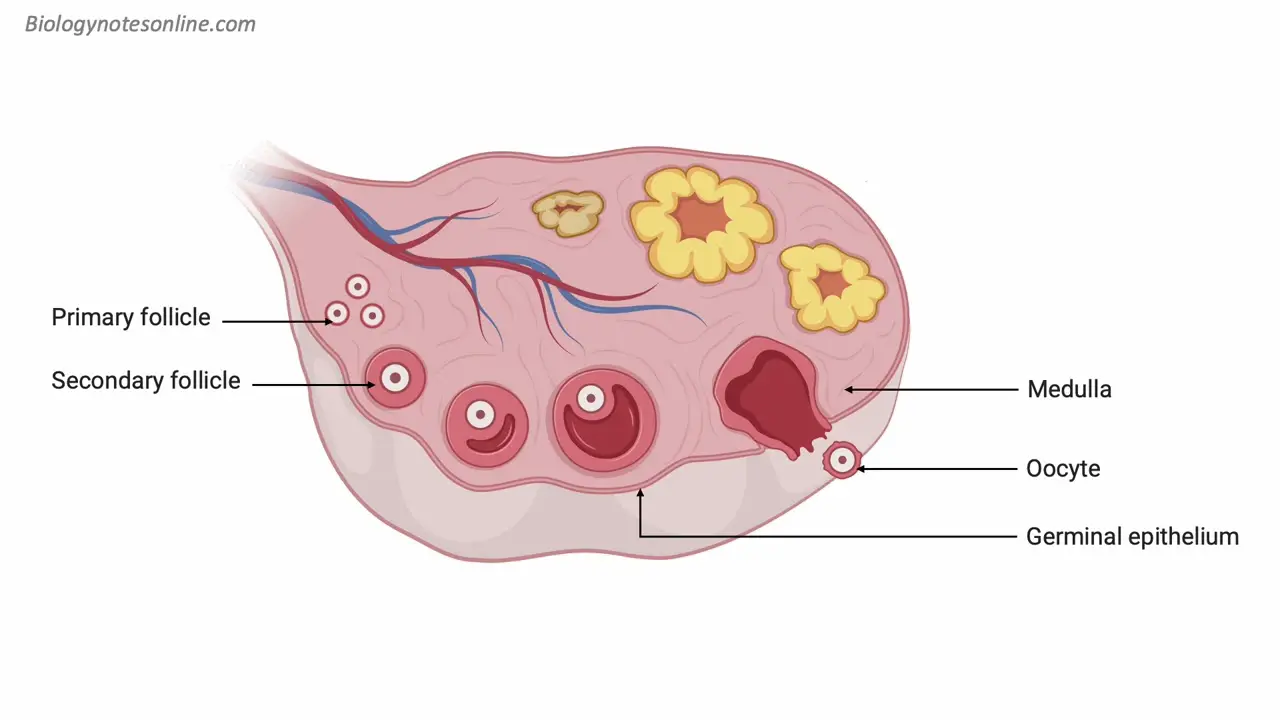


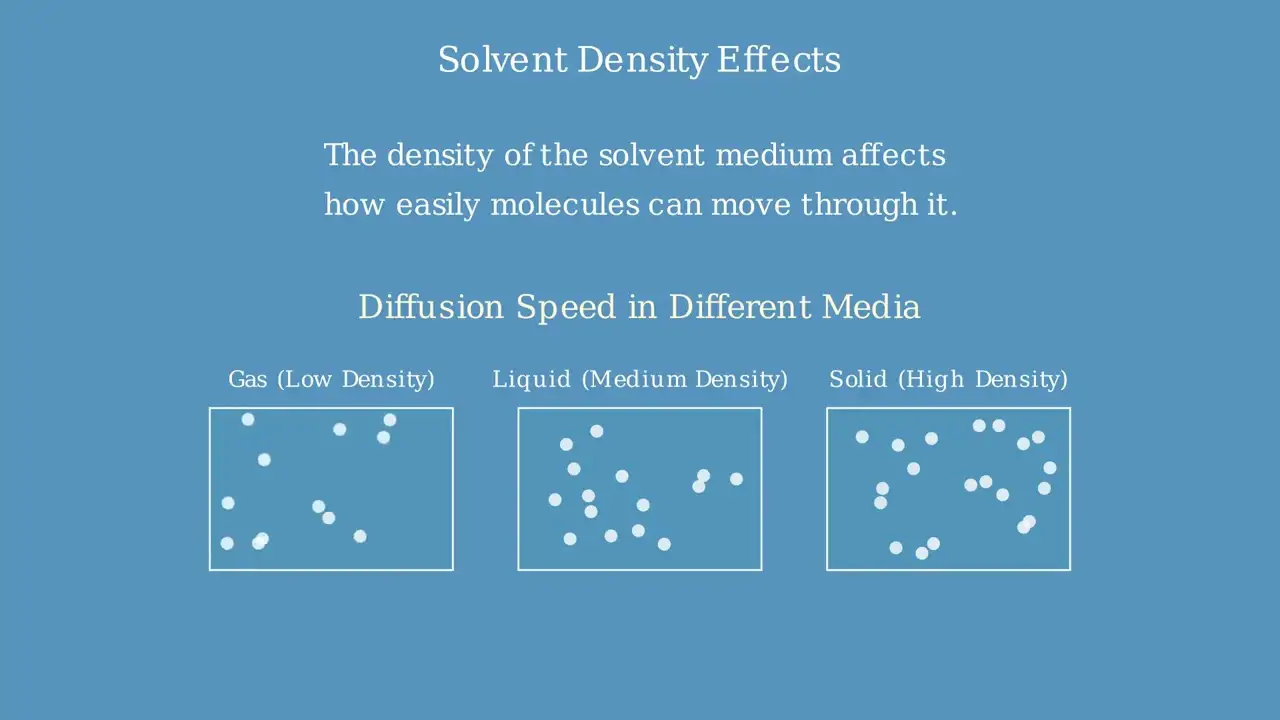
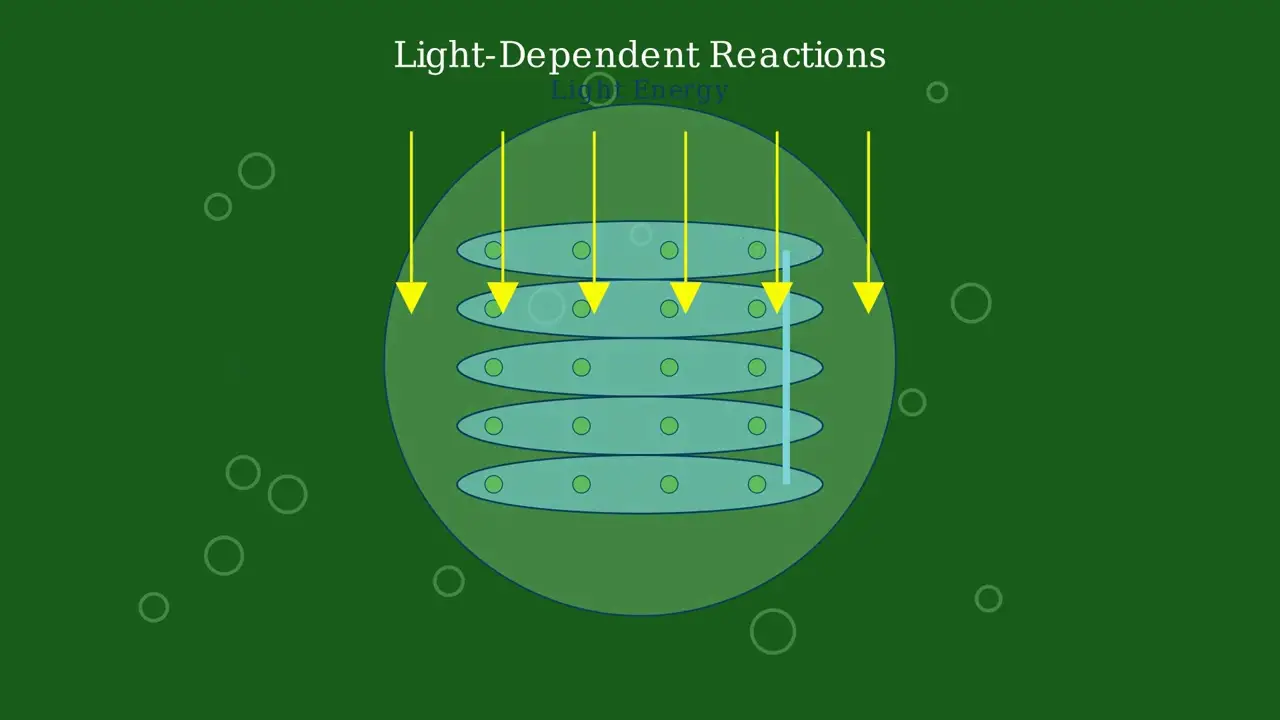

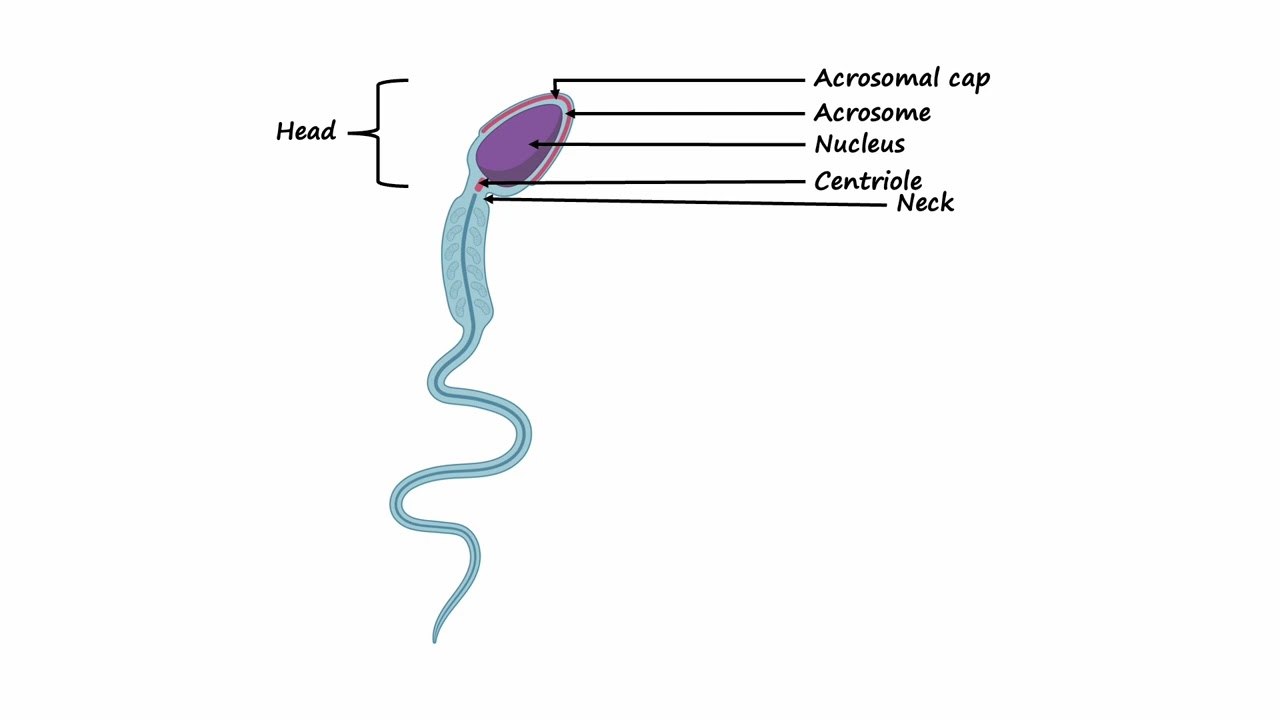
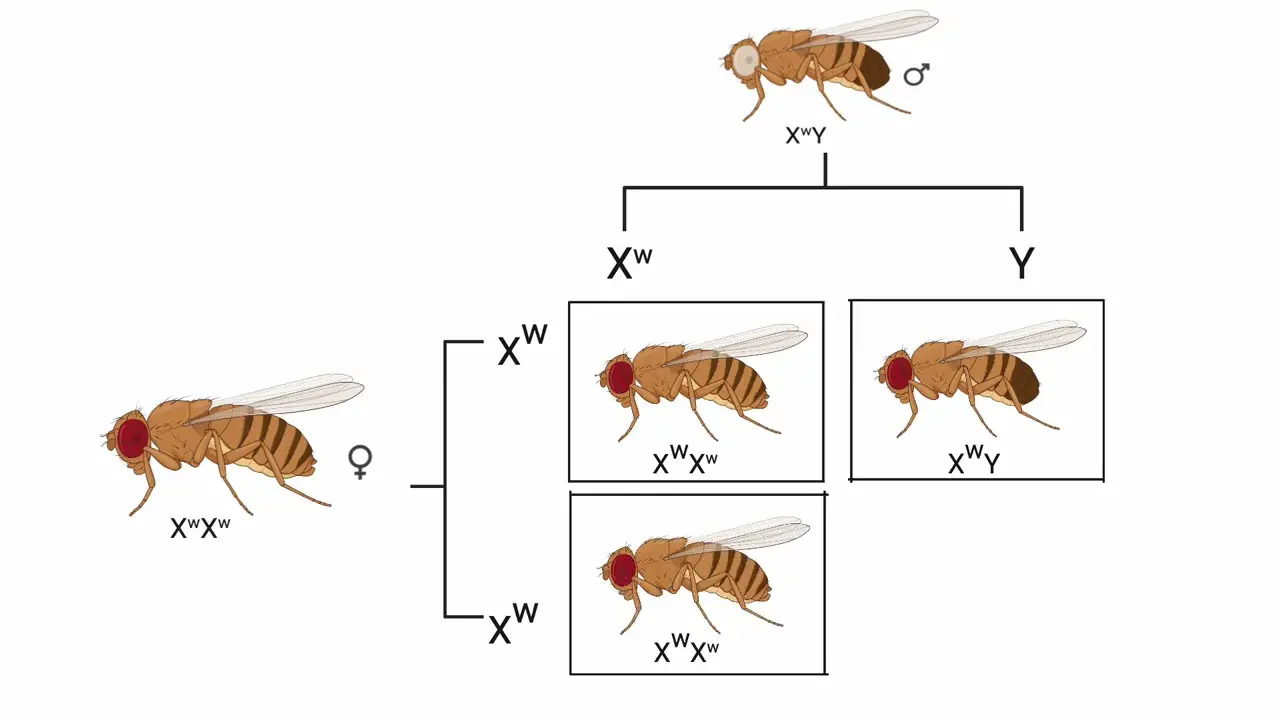
- Text Highlighting: Select any text in the post content to highlight it
- Text Annotation: Select text and add comments with annotations
- Comment Management: Edit or delete your own comments
- Highlight Management: Remove your own highlights
How to use: Simply select any text in the post content above, and you'll see annotation options. Login here or create an account to get started.